By Robert Tate, Automotive Historian and Researcher
Images courtesy of Robert Tate
Posted: 11.15.2016
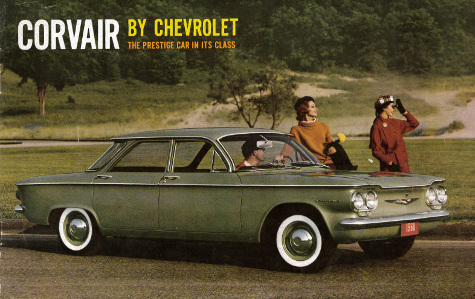
When you take a look back at our history of our most iconic American automobiles, the Corvair models by Chevrolet would be near the top of that list.
The Chevrolet Corvair was introduced to the automotive market as a compact car that featured a lot of new innovations including a 6-cylinder rear mounted air-cooled engine combined with a transmission differential unit and independent all-wheel suspension. With the introduction of the first Corvair also came what was called the “Unipak”
During the introduction for the Corvair models, Chief Engineer Mr. H.F. Barr said this about the Chevrolet Corvair production cars. “The Corvair represents a breakthrough in compact car designs by starting with a clean slate, taking advantage of recent technological advances in automotive and allied fields. Chevrolet engineers have designed a new kind of car that meets a combination of requirements that as recently as five years ago would have been impossible to satisfy.”
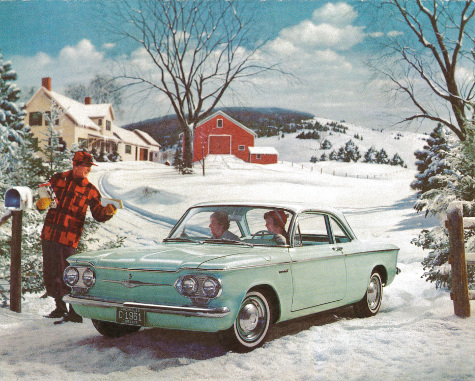
The Corvair was the product of a nine-year research and development program aimed at designing a compact car which was low in initial cost. The Corvair models offered the consumer stainless steel hub caps with a circular depressed center area with the name Chevrolet on the hubcap which looked great for the consumer market. Horizontal inlet louvers on the engine compartment lid would admit the cooling air to the engine and also added design interest for the customer as well.
The Chevrolet nameplate was located on the rear deck beginning with the earlier Corvair models. The letters were highlighted in bright block letters that provided a vehicle identification for its models. Another advantage that the Corvair models offered was the luggage compartment located in the front of the vehicle. This area provided more than 15.6 cubic feet of space along with an optional folding rear seat that could be used by the passenger as well as the driver.
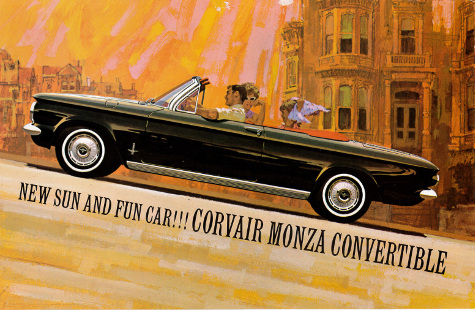
The Corvair models retained a similar body style from 1960-1964. Chevrolet also introduced a Corvair Monza 900 Club Coupe model that sold for $2,238. In 1965, Chevrolet updated its house design for the consumer market. I always thought as an automotive historian that the 1965 General Motors line offered impeccable styling which many consumers thoroughly had enjoyed.
The 1965 Corvair models were introduced to the public on Sept. 16, 1964. They were longer, wider and lower while offering increased engine power. A new top-of the line series, called the Corsa, became popular among consumers and was manufactured in both convertible and a sports coupe which had replaced the Corvair Spyder.
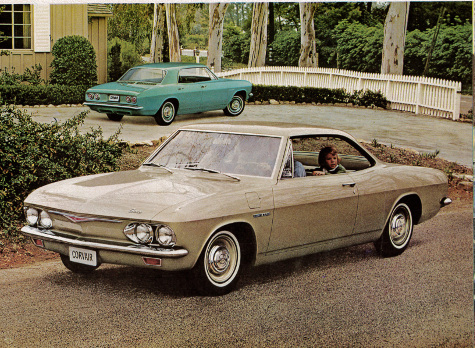
The newly designed Corvair models also gave more increased shoulder room and entrance height plus more leg room in the rear seat of sports sedan models. The convertible models also offered all-electric top mechanisms for 1965. The Corvair Greenbrier sports wagons rounded out the 1965 model line.
The popularity of the model led to increased manufacturing and sales for 1965. Chevy dealers sold 237,056 Corvairs that year.
By 1967, however, the Corvair line was not showing an advantage in automotive sales and just over 27,000 cars were produced. The eventual phasing out of the Corvair was also aided by consumer advocate Ralph Nader who included a chapter on the rear-engine car in his now famous book, “Unsafe at any Speed.”
The year 1969 marked the last year that Corvair models were assembled and as could be expected the Corvair name plate was dropped from General Motors.
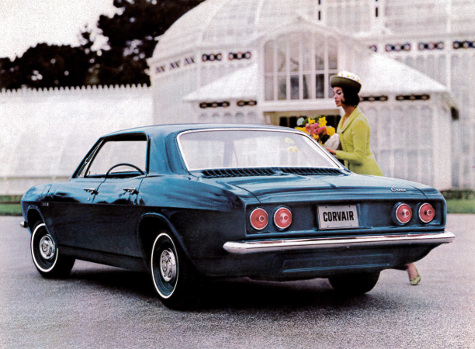
A special thanks to Robert Tate, Automotive Historian and Researcher, for contributing this story to the MotorCities Story of the Week Program.
For further information on photos please visit http://www.detroitpubliclibrary.org/ or email This email address is being protected from spambots. You need JavaScript enabled to view it.. Please do not republish the story and/or photographs without permission of MotorCities National Heritage Area. (Bibliography: Dammann H., George “Sixty years of Chevrolet” Crestline Publishing 1972.)



